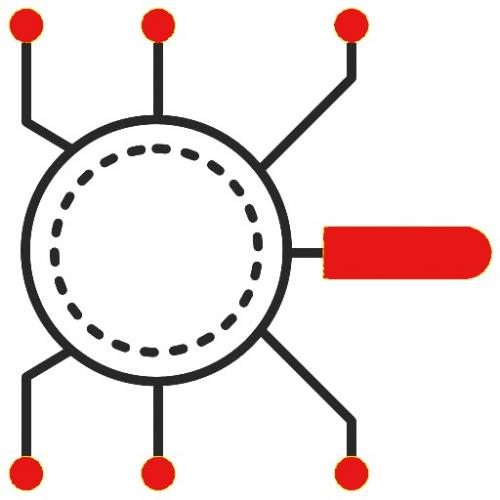Copy Link
Add to Bookmark
Report
IRList Digest Volume 3 Number 32

IRList Digest Tuesday, 25 August 1987 Volume 3 : Issue 32
Today's Topics:
Announcement - Abstracts from next ACM SIGIR Forum (part 4 of 4)
News addresses are ARPANET: fox%vtopus.cs.vt.edu@relay.cs.net
BITNET: foxea@vtvax3.bitnet CSNET: fox@vt UUCPNET: fox@vtopus.uucp
----------------------------------------------------------------------
Date: Mon, 10 Aug 87 15:17:43 CDT
From: nancy@usl-vb.usl.edu (Nancy )
Subject: Abstracts from next ACM SIGIR Forum - sent by Raghavan
ABSTRACTS (part 4 of 4)
30. ENHANCEMENT OF TEXT REPRESENTATIONS USING RELATED DOCUMENT TITLES
G. Salton
Department of Computer Science
Cornell University
Ithaca, NY 14853
and
Y. Zhang
Institute of Computer Technology
China Academy of Railway Sciences
Beijing, China
Various attempts have been made over the years to construct enhanced
document representations by using thesauruses of related terms, term asso-
ciation maps, or knowledge frameworks that can be used to extract
appropriate terms and concepts. None of the proposed methods for the
improvement of document representation has proved to be generally useful
when applied to a variety of different retrieval environments. Some recent
work by Kwok suggests that document indexing may be enhanced by using
title words taken from bibliographically related items. An evaluation of
the process shows that many useful content words can be extracted from
related document titles, as well as many terms of doubtful value.
Overall, the procedure is not sufficiently reliable to warrant incorpora-
tion automatic retrieval systems.
(INFORMATION PROCESSING & MANAGEMENT, Vol, 22, No. 5, pp. 385-394, 1986)
31. A DISCIPLINE-SPECIFIC JOURNAL SELECTION ALGORITHM
Chunpei He
Institute of Information of Agricultural Science and Technology
Chinese Academy of Agricultural Sciences
Beijing, People's Republic of China
and
Miranda Lee Pao
School of Library Science
The University of Michigan
Ann Arbor, Michigan 48109
An experiment was conducted to demonstrate the validity of a journal
selection and ranking algorithm designed for any discipline. The charac-
teristics of the journal generation procedure incorporate both cited and
citing journals so that basic scientific research journals contributing to
the research foundation of the discipline, as well as journals in the dis-
cipline, might be identified. A Discipline Influence Score was proposed
as a journal weight which could reflect the relative citation influence of
each journal to the discipline under consideration. Two evaluation stu-
dies showed that this method produced many journals which were perceived
as frequently used journals by a group of American and Chinese profession-
als in veterinary medicine. Journals with high Discipline Influence Scores
were also selected by experts in their compilations of basic recommended
lists in this discipline. In particular, the easy implementation of this
journal selection algorithm appears to be of practical use to resource-
poor libraries.
(INFORMATION PROCESSING & MANAGEMENT, Vol. 22, No. 5, pp. 405-416, 1986)
32. EMPIRICAL VALIDATION OF LOTKA'S LAW
Paul Travis Nicholls
School of Library and Information Science
University of Western Ontario
London, Canada N6G 1H1
Two modifications to the Pao procedure for testing Lotka's law are pro-
posed and applied to 15 samples drawn from the humanities, social sci-
ences, and sciences.
(INFORMATION PROCESSING & MANAGEMENT, Vol. 22, No. 5, pp. 417-419, 1986)
33. ON RELEVANCE WEIGHT ESTIMATION AND QUERY EXPANSION
S. E. Robertson
Department of Information Science
The City University
London, EC1V 0HB
A Bayesian argument is used to suggest modifications to the
Robertson/Sparck Jones relevance weighting formula, to accommodate the
addition to the query of terms taken from the relevant documents identi-
fied during the search.
(JOURNAL OF DOCUMENTATION, Vol. 42, No. 3, pp. 182-188, 1986)
34. SUBJECT ACCESS IN ONLINE CATALOGS: A DESIGN MODEL
Marcia J. Bates
Graduate School of Library and Information Science
University of California at Los Angeles
Los Angeles, CA 90024
A model based on strikingly different philosophical assumptions from
those currently popular is proposed for the design of online subject cata-
log access. Three design principles are presented and discussed: uncer-
tainty (subject indexing is indeterminate and probabilistic beyond a cer-
tain point), variety (by Ashby's law of requisite variety, variety of
searcher query must equal variety of document indexing), and complexity
(the search process, particularly during the entry and orientation phases,
is subtler and more complex, on several grounds, than current models
assume). Design features presented are an access phase, including entry
and orientation, a hunting phase, and a selection phase. An end-user
thesaurus and a front-end system mind are presented as examples of online
catalog system components to improve searcher success during entry and
orientation.
The proposed model is ``wrapped around'' existing Library of Congress
subject-heading indexing in such a way as to enhance access greatly
without requiring reindexing. It is argued that both for cost reasons and
in principle this is a superior approach to other design philosophies.
(JOURNAL OF THE AMERICAN SOCIETY FOR INFORMATION SCIENCE, Vol. 37, No. 6,
pp. 357-376, 1986)
35. WHY ARE ONLINE CATALOGS HARD TO USE? LESSONS LEARNED FROM INFORMATION-
RETRIEVAL STUDIES
Christine L. Borgman
Graduate School of Library and Information Science
University of California
Los Angeles, CA 90024
Research in user behavior on online catalogs is in its early stages,
but preliminary findings suggest that users encounter many of the same
problems identified in behavioral studies of other types of bibliographic
retrieval systems. Much can be learned from comparing the results of user
behavior studies on these two types of systems. Research on user problems
with both the mechanical aspects and the conceptual aspects of system use
is reviewed, with the conclusion that more similarity exists across types
of systems in conceptual than in mechanical problems. Also discussed are
potential sources of the problems, due either to individual characteris-
tics or to system variables. A series of research questions is proposed
and a number of potential interim solutions are suggested for alleviating
some of the problems encountered by users of information systems.
(JOURNAL OF THE AMERICAN SOCIETY FOR INFORMATION SCIENCE, Vol. 37, No. 6,
pp. 387-400, 1986)
36. PARALLEL FREE-TEXT SEARCH ON THE CONNECTION MACHINE SYSTEM
Craig Stanfill and Brewster Kahle
Thinking Machines Corporation
245 First Street
Cambridge, MA 02142.
A new implementation of free-text search using a new parallel computer
- the Connection Machine - makes possible the application of exhaustive
methods not previously feasible for large databases.
(COMMUNICATIONS OF THE ACM, Vol. 29, No. 12, pp. 1229-1239, 1986)
37. A PROBLEM IN INFORMATION RETRIEVAL WITH FUZZY SETS
Duncan A. Buell
Department of Computer Science
Louisiana State University
Baton Rouge, LA 70803
In this note attempts to invent a system of weighted fuzzy queries, in
which the weights would correspond to the relative importance of each term
to the query as a whole are evaluated.
(JOURNAL OF THE AMERICAN SOCIETY FOR INFORMATION SCIENCE, Vol. 36, No. 6,
pp. 398-401, 1985)
38. ANOTHER LOOK AT AUTOMATIC TEXT-RETRIEVAL SYSTEMS
Gerard Salton
Department of Computer Science
Cornell University
Ithaca, NY 14853
An automatic text-retrieval system is designed to search a file of
natural-language documents and retrieve certain stored items in response
to queries submitted by a user.
Evidence from available studies comparing manual and automatic text-
retrieval systems does not support the conclusion that intellectual con-
tent analysis produces better results than comparable automatic systems.
(COMMUNICATIONS OF THE ACM, Vol. 29, No. 7, pp. 648-656, 1986).
39. SELF-ASSESSMENT PROCEDURE XV - FILE PROCESSING
Martin K. Solomon and Riva Wenig Bickel
Department of Computer and Information Systems
Florida Atlantic University
Boca Raton, FL 33431
This is the fifteenth self-assessment procedure. All the previous ones
are listed on the next page. The first thirteen are available from the
ACM* in a single loose-leaf binder to which later procedures may be
added.
This procedure deals with various aspects of file processing, including
low level considerations and the design, use, and performance of access
methods and file structures.
A subtheme of the procedure, chosen for its illustration of a number of
important points, is the contrast between file processing in the ``large
scale IBM-like environment'' and in the ``Unix-like environment.''
* Order Number 203804.
(ASSOCIATION FOR COMPUTING MACHINERY, Vol. 29, No. 8, pp. 745-750, 1986)
40. MAN-MACHINE INTERFACES: CAN THEY GUESS WHAT YOU WANT?
Robert F. Simmons
University of Texas at Austin
Computer Science Department
Austin, TX 78712
Help systems and menus make operating systems more friendly and useful,
but can natural language interfaces guess what the user means but not
specify?
(IEEE EXPERT, Vol. 1, No. 1, pp. 86-94, 1986)
------------------------------
END OF IRList Digest
********************















